Egg trays play a crucial role in the packaging and transportation of eggs, making them essential in farms, supermarkets, and food processing industries.
Made from environmentally friendly materials like pulp and waste paper, egg trays are shockproof, eco-friendly, and easily recyclable. With the growing demand for egg trays in the market, improving production efficiency and ensuring product quality have become key focuses for businesses.

Market prospects for egg tray production
With the global increase in egg consumption, the demand for egg trays is also steadily rising. Additionally, the growing awareness of environmental protection and food safety concerns has led consumers to prefer eco-friendly egg trays.
To adapt to this trend, companies must continuously improve production efficiency and reduce costs to remain competitive in the market.
By enhancing production processes and optimizing workflow, businesses can meet market demands while delivering high-quality, environmentally friendly products, thereby securing a strong position in an increasingly competitive market.
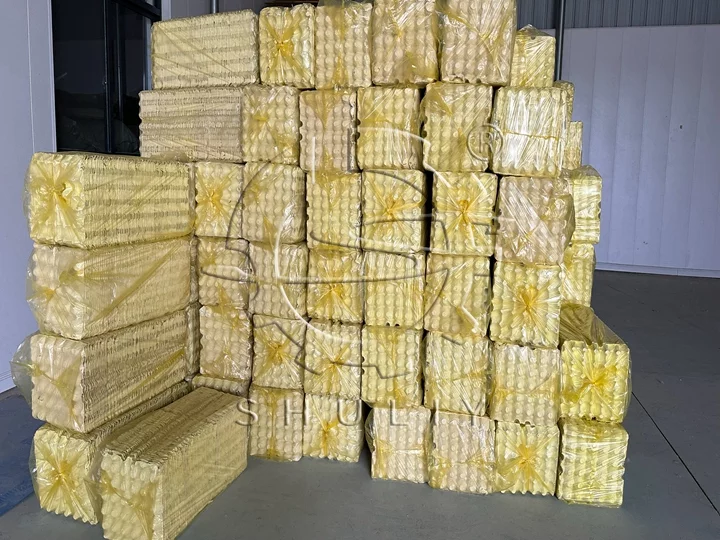
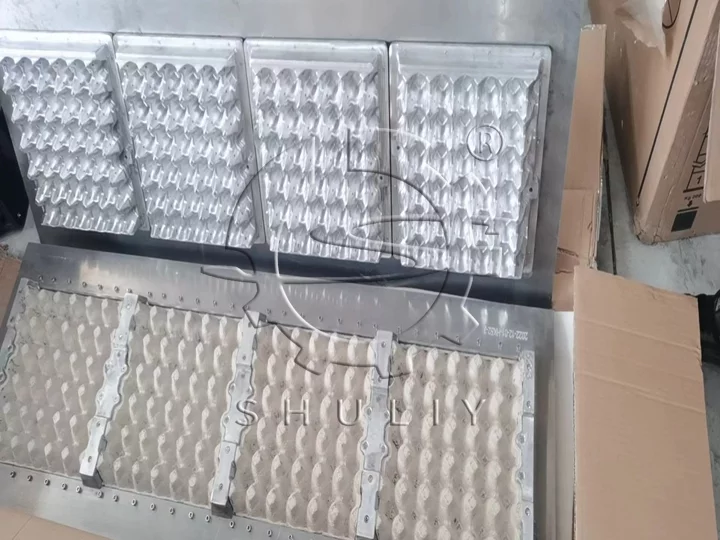
Types of egg tray production equipment
To achieve efficient production, an egg tray production line typically consists of several types of equipment, including:
- Pulping machine. Used to mix waste paper and water into pulp.
- Molding machine. Shape the pulp into egg trays.
- Drying machine. Dries the molded egg trays to ensure their strength.
- Hot pressing machine. Further compact the egg trays to enhance durability.
- Packing machine. Automatically stacks, sorts, and packages the finished egg trays for easy transport and storage.
By properly configuring these pieces of equipment, production efficiency can be effectively increased. Companies can choose either individual machines or a complete production line based on their production needs.
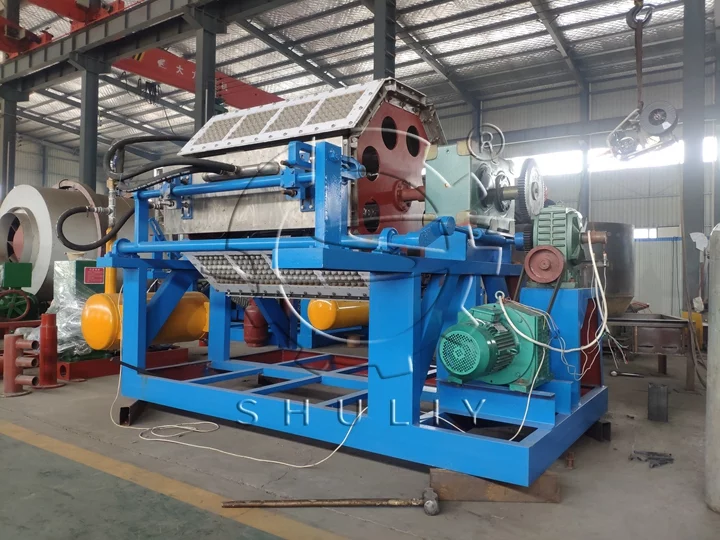
In addition to equipment selection, choosing the right raw materials is crucial for optimizing production.
Key factors in improving egg tray production efficiency
1. Selecting high-quality raw materials
The foundation of efficient egg tray production starts with selecting the right raw materials. Clean waste paper and cardboard are ideal as they pulp more easily and offer excellent bonding properties.
This ensures that the pulp consistency is optimal for forming durable and high-quality egg trays. Using materials with minimal impurities is crucial, as impurities can weaken the trays and disrupt the production process.


2. Optimizing equipment selection and site layout
Efficient production is not just about having good equipment; it also involves strategic equipment placement and site layout. Additionally, good ventilation and environmental protection facilities can improve the quality of the production environment, ensuring safety and sustainability.
Next, we will introduce how to improve your egg tray production.

Optimizing the paper carton production process
To maximize efficiency in egg tray production, refining the process involves more than just high-quality machinery. Here’s a structured approach to achieving optimal performance:
1. Strategic equipment layout
- Pulping to molding. Place the pulping machine close to the molding machine. This minimizes the distance pulp travels, reducing transport time and energy consumption.
- Molding to drying. Position the drying machine immediately after the molding machine. This setup ensures a smooth transition from the wet to dry stages, decreasing unnecessary handling and potential delays.
Effective equipment arrangement helps maintain a continuous flow, reducing interruptions and enhancing overall production speed.
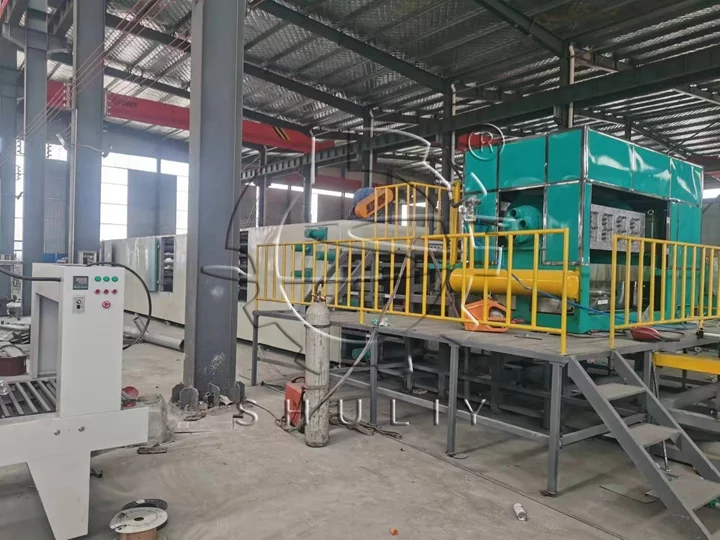
2. Regular equipment maintenance
- Scheduled inspections. Conduct frequent checks on critical machines such as vacuum pumps and molding systems. Regular inspections help prevent unexpected breakdowns.
- Timely repairs. Address maintenance issues promptly to avoid production halts and extend machinery lifespan. This proactive approach ensures consistent product quality and reduces downtime.
Routine maintenance is essential for smooth operation and high-quality output.
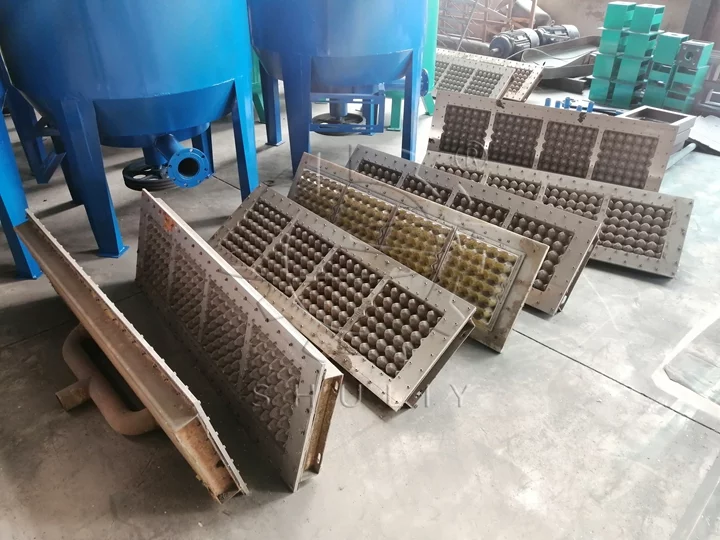
3. Efficient personnel allocation
- Dedicated operators. Assign specific operators to each stage of the production line—pulping, molding, and drying. Specialized staff can manage their sections effectively and address issues quickly.
- Problem resolution. Train personnel to identify and resolve minor problems swiftly to prevent major disruptions. This targeted staffing approach ensures each segment of the production process operates smoothly.
Proper personnel allocation ensures each production phase is monitored closely, enhancing both efficiency and product quality.
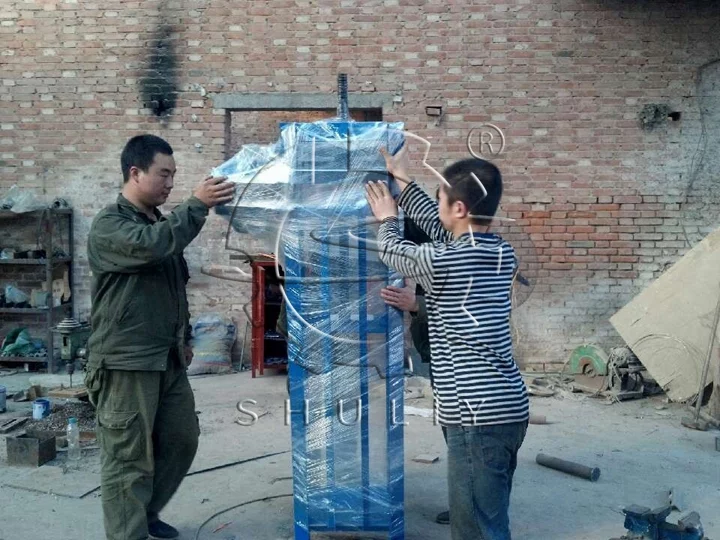
By integrating a strategic equipment layout, rigorous maintenance, and well-allocated personnel, you can optimize the egg tray production process, meeting market demands while maintaining high-quality standards.
Technical requirements for high-quality egg trays
Producing high-quality egg trays goes beyond having reliable production equipment and effective management; it also demands adherence to specific technical standards to ensure durability and functionality. Here are the key technical requirements for producing top-notch egg trays:
1. Optimal moisture content
Maintaining the correct moisture levels is crucial in the production of egg trays. The moisture content of the pulp should be controlled between 50-60% during the pulping stage to facilitate proper molding and shaping. After molding, the moisture content of the egg trays should be reduced to below 10% to ensure they are sufficiently dried and strong enough for handling and transportation.
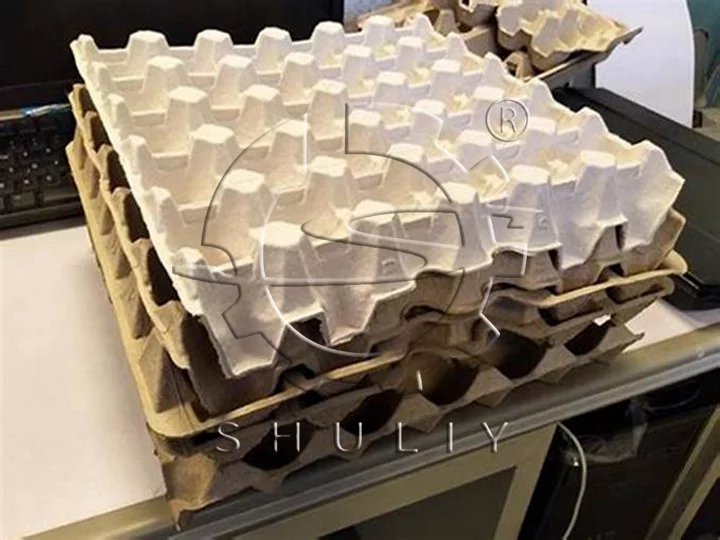
2. Consistent thickness
Uniform thickness across all egg trays is essential for ensuring their shock-absorbing capabilities. Even thickness helps distribute weight evenly, providing better protection for eggs during transport. Consistency in thickness also reduces the likelihood of weak spots, which can lead to breakage or deformation under stress.
3. High compressive strength
Egg trays need to possess high compressive strength to withstand the pressures encountered during stacking, handling, and transportation. Strong egg trays prevent eggs from being damaged or cracked, ensuring safe delivery to their destination. Achieving this level of strength requires careful control of the molding and drying processes to avoid weaknesses or defects.
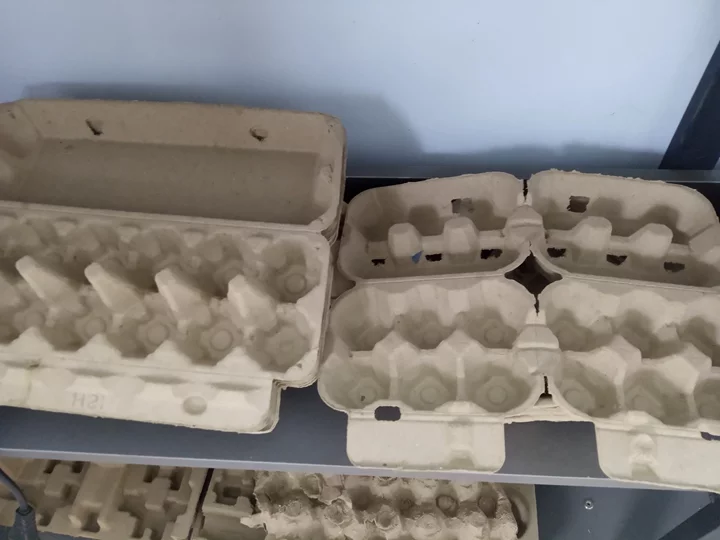
By meeting these technical requirements, manufacturers can produce egg trays that offer superior performance and reliability, protecting their contents effectively while maintaining structural integrity throughout the supply chain.
Working principle and production process of egg tray machines
Understanding the working principle of egg tray machines is essential for effectively operating and maintaining the production equipment. The egg tray machine’s production process consists of three main stages: pulping, molding, and drying. By understanding the operations and precautions at each stage, companies can better maintain their equipment and manage their production processes.
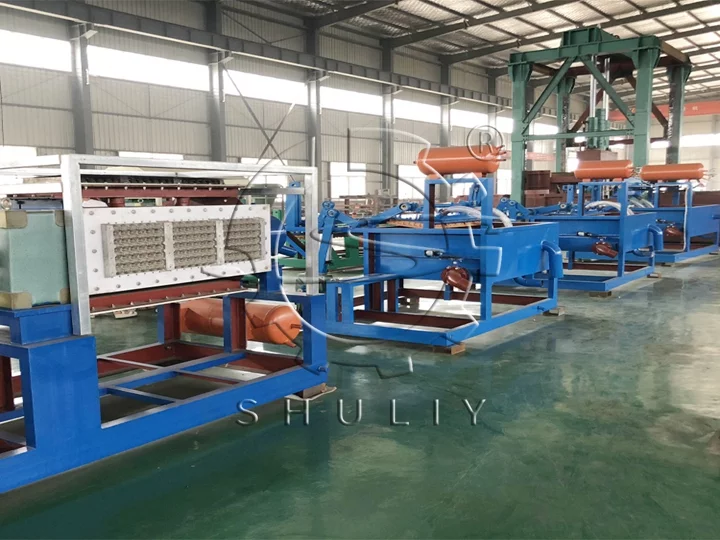
1. Pulping stage
In the pulping stage, waste paper and water are mixed in the pulping machine to create a uniform pulp. This pulp is then processed through various operations in the pulp adjustment and supply pools to achieve the desired consistency and quality. This stage is crucial for ensuring the uniformity of the pulp, which is essential for the subsequent molding process.
2. Molding stage
During the molding stage, the pulp is adsorbed onto the mold using the negative pressure generated by a vacuum pump. The pulp is then formed into the shape of an egg tray through a process of vacuum dehydration and positive pressure blowing. This precise operation is key to ensuring that the egg trays have uniform thickness and adequate strength.
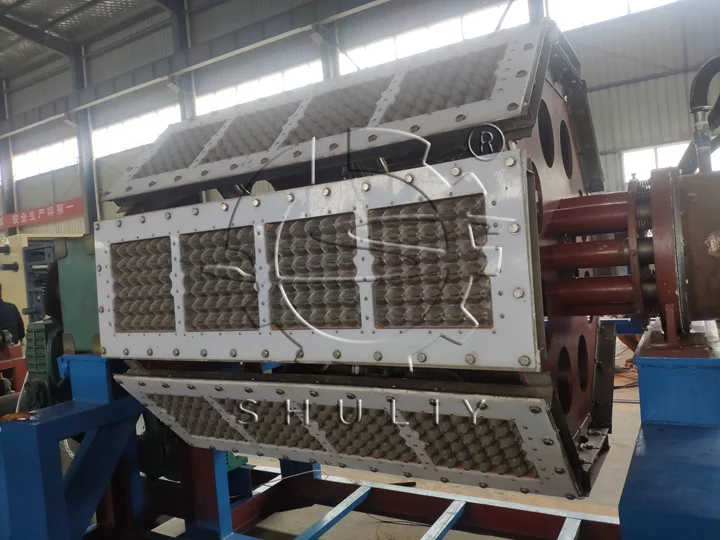
3. Drying stage
In the drying stage, the molded egg trays are dried using a drying machine to ensure their strength and durability. After drying, the egg trays are automatically counted, stacked, and then packaged for storage and transport. Choosing the appropriate drying method and equipment configuration can significantly enhance production efficiency and ensure the final quality of the egg trays.
By understanding these production steps, companies can optimize the production process and improve efficiency. Selecting the right drying method and equipment configuration according to specific production needs is essential for achieving optimal results in egg tray manufacturing.
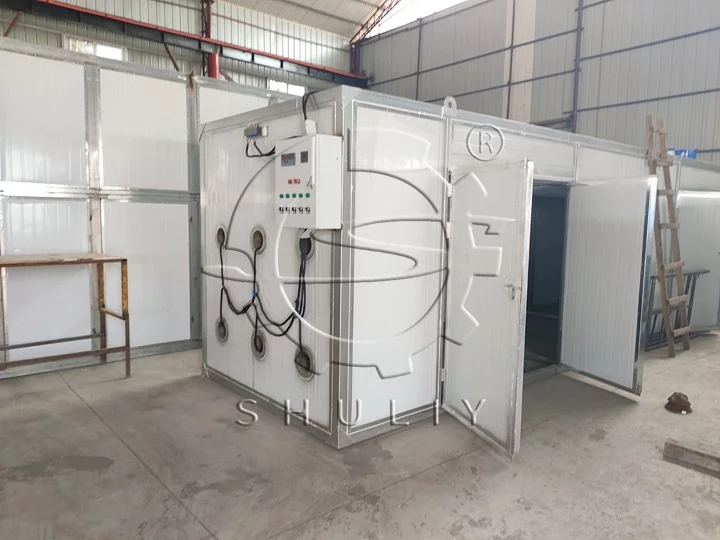
FAQs of egg box making process
How does the presence of impurities in raw materials affect egg tray production?
High levels of impurities in raw materials can reduce the quality and strength of the egg trays. To address this, it’s crucial to use a vibrating screen to remove larger impurities before the pulp formation.
What are the common wear and tear issues with egg tray machine molds, and how can they be managed?
Typically, mold wear is minimal. To manage potential wear and ensure production continuity, consider purchasing additional mold sets. This way, you can replace worn-out molds quickly and maintain production efficiency.
Can a single machine produce both standard and custom-shaped egg trays, and how does mold replacement work?
Yes, a single machine can produce both standard and custom-shaped trays by simply changing the molds. For custom shapes, additional equipment such as a heat press may be required. Mold changes are straightforward, allowing versatility in production.
What are the advantages of using your egg tray production machines compared to competitors?
Our machines use standard steel materials, ensuring high hardness and long lifespan. The drying systems feature stainless steel construction for durability and corrosion resistance. Additionally, our machines utilize 100% insulation cotton for effective heat retention and reduced fuel consumption.
Conclusion
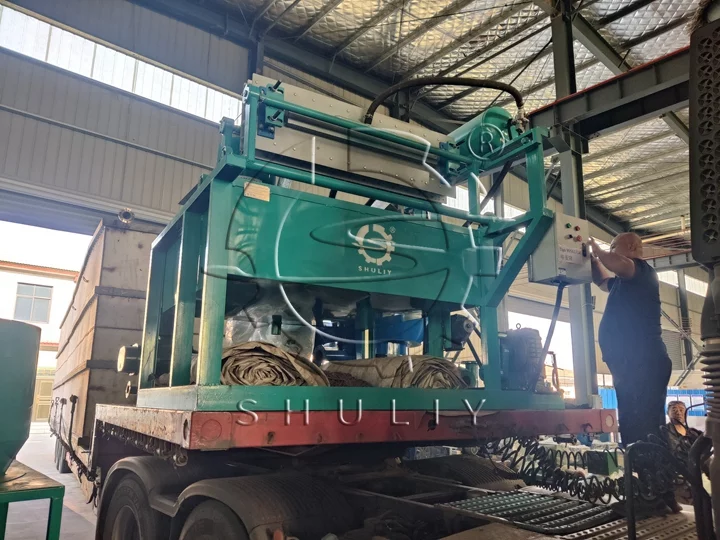

By carefully selecting raw materials, optimizing equipment configuration and production processes, and enhancing personnel management and equipment maintenance, companies can significantly improve the efficiency and quality of egg tray production.
In a competitive market environment, these measures will help companies better meet customer needs and enhance their market competitiveness. If you are interested in our egg tray production lines or individual machines, please contact us. We will provide the best solutions based on your needs.
